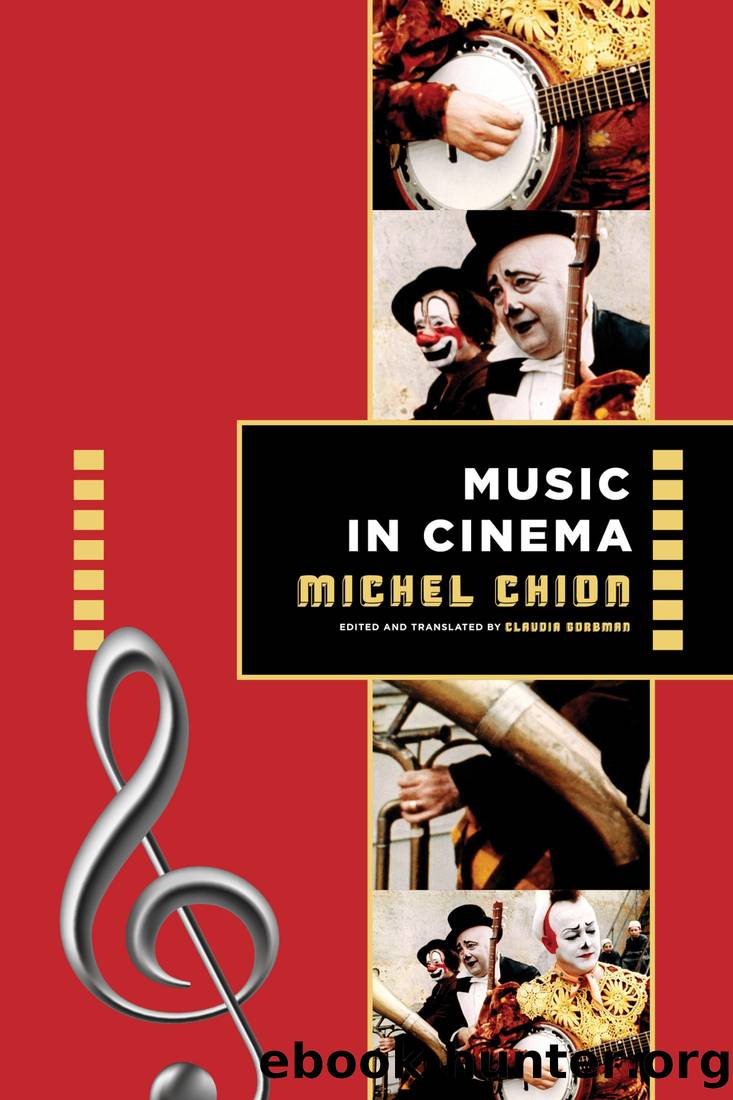Music in Cinema by Michel Chion

Author:Michel Chion [Chion, Michel]
Language: eng
Format: epub
Tags: art, Film & Video, Photography, Techniques, Cinematography & Videography, music, Printed Music, Musicals; Film & TV
ISBN: 9780231552851
Google: JBYrEAAAQBAJ
Publisher: Columbia University Press
Published: 2021-10-12T00:26:48.574551+00:00
A NEW SYMPHONISM
At the same time, symphonism has continued to exist in film, but in new and redefined form. Pierre Berthomieu describes it well:
In the 1990s, thanks to Rain Man (1988), The Lion King (1994) and a whole series of action movies (USS Alabama, The Rock, etc.), the sound created by the German Hans Zimmer achieved unprecedented success and gradually took over as a dominant, even tyrannical form. Crafted by teams working under Zimmer, this sound exudes the energy of modern electronic rock. For the complex orchestral production of symphonism Zimmer substituted immersive musical sound (horn calls, extended and repetitive string motifs, overwhelming aggressive percussion, systematic uses of minimalist ostinatos) in a style that avoids any complex development. The orchestral elements are doubled by massive samples that create a wall of sound. The style has its roots in world music and mystical minimalism (the ecstatic contemplative style of Arvo Pärt) ⦠What does this approach fear most? Detailed orchestrations, presence that is too identifiable, and above all, grand themes ⦠The theme that undergoes development is worrying: itâs too much like classical music ⦠The triumph of the Pirates of the Caribbean franchise, with music by the Zimmer team with a lovely thematic richness (and even delicate and romantic solos in the third episode), seemingly contradicts the dread of symphonism.7
Zimmer created studios named Media Ventures and Remote Control, and after the successes of the Batman films directed by Christopher Nolan, he adopted a style Berthomieu comments on:
The power of classical symphonism attested to a transcendent presence over the narrative raw material, whereas the Remote Control sound acknowledges a world overwhelmed by sonic material and aims for the integration/dissolution of music. Music is treated like sound design, whose tracks it shares. Restricted to the registers of human voices and physical action, it literally invades space but no longer transcends it. Musical presence thus retains the omnipresence of the classical era (reconquered in the John Williams age), but cohabits with the whole range of sound design, like a relentless ambiance.8
Should we consider the taste for Pärtâs and Philip Glassâs music in films as one of the forms that this dissolution has taken? Alternatively, we might consider the trend as a reaction against it, bringing a kind of transcendence amid the worldâs cruel reality through the intervention of a pure and ethereal music that seems to come from another world outside the normal lives of the characters.
Download
This site does not store any files on its server. We only index and link to content provided by other sites. Please contact the content providers to delete copyright contents if any and email us, we'll remove relevant links or contents immediately.
Kathy Andrews Collection by Kathy Andrews(11674)
The remains of the day by Kazuo Ishiguro(8733)
Paper Towns by Green John(5022)
Spare by Prince Harry The Duke of Sussex(4990)
The Body: A Guide for Occupants by Bill Bryson(4876)
Industrial Automation from Scratch: A hands-on guide to using sensors, actuators, PLCs, HMIs, and SCADA to automate industrial processes by Olushola Akande(4825)
Machine Learning at Scale with H2O by Gregory Keys | David Whiting(3942)
Be in a Treehouse by Pete Nelson(3874)
Harry Potter and the Goblet Of Fire by J.K. Rowling(3733)
Never by Ken Follett(3697)
Goodbye Paradise(3658)
Into Thin Air by Jon Krakauer(3256)
The Remains of the Day by Kazuo Ishiguro(3249)
The Cellar by Natasha Preston(3214)
The Genius of Japanese Carpentry by Azby Brown(3185)
Fairy Tale by Stephen King(3150)
120 Days of Sodom by Marquis de Sade(3110)
Drawing Shortcuts: Developing Quick Drawing Skills Using Today's Technology by Leggitt Jim(2958)
The Man Who Died Twice by Richard Osman(2950)
